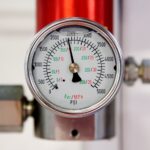In an era where energy efficiency and smart technology go hand-in-hand, a malfunctioning smart thermostat can feel like a monumental setback to home comfort. Smart thermostats promise convenience and cost savings, but what happens when they don’t function as expected? Understanding these malfunctions is crucial for maintaining a seamless connection between modern technology and a comfortable living environment.
- Smart thermostats can experience malfunctions related to both wireless connectivity and programming errors.
- Connectivity issues often arise from Wi-Fi disruptions, interference, or outdated software.
- Programming errors can lead to inefficient scheduling or incorrect temperature settings.
By diving into the common issues and their solutions presented in this article, you’ll equip yourself with the knowledge to effectively troubleshoot and maintain your smart thermostat, preserving both comfort and efficiency in your home.
Understanding Smart Thermostat Malfunctions: Connection and Programming Fixes
Smart thermostats have revolutionized home climate control by enhancing energy efficiency and user convenience. However, like all technology, they are not immune to problems. The most common malfunctions stem from wireless connectivity issues and programming errors.
Wireless connectivity problems can disrupt communication between your smart thermostat and your home network, leading to irregular or incorrect temperature adjustments. These issues often result from Wi-Fi disruptions, signal interference, or outdated software. Consequently, your home’s climate control system might underperform or operate inefficiently.
Programming errors can cause your thermostat to follow incorrect schedules or settings, directly impacting your home’s comfort level and energy usage. Misconfigurations or user input errors often lead to these problems, requiring careful review and adjustment of the programmed settings.
Understanding the root causes behind these malfunctions is essential in efficiently restoring the smart thermostat’s functionality. By addressing both connectivity and programming concerns, you can ensure consistent temperature control and maintain your home’s energy efficiency.
Common Connectivity Issues in Smart Thermostats
Connectivity issues with smart thermostats frequently arise due to Wi-Fi disruptions, network interference, or outdated software. These problems can cause your thermostat to lose connection, which might prevent you from remotely controlling your home’s temperature settings. It can also lead to inaccurate temperature readings.
To fix these issues, start by checking your network settings. Ensure that your thermostat is connected to the correct Wi-Fi network and that the connection is stable. Weak Wi-Fi signal strength can often be improved by repositioning your router or installing a Wi-Fi extender.
Interference is another significant factor contributing to connectivity problems. Electronic devices, thick walls, and even metal objects can disrupt the signal between your smart thermostat and your router. Minimizing such interference can substantially improve connectivity.
Finally, make sure your smart thermostat is running the latest firmware. Manufacturers often release updates to fix bugs and enhance performance. Regularly checking for and installing these updates can help maintain a stable connection.
By addressing these common connectivity issues, homeowners can restore seamless communication between their smart thermostats and home networks. This ensures that your climate control system operates efficiently and reliably.
Programming Errors and Smart Thermostat Malfunctions: Connection and Programming Fixes
Programming errors in smart thermostats are a common source of frustration for homeowners looking to maintain a steady and energy-efficient environment. These errors can lead to almost imperceptible issues, such as inefficient scheduling or incorrect temperature settings, which significantly impact energy consumption and comfort levels within the home.
To detect and resolve these programming malfunctions, it is essential to first review the user settings. Many homeowners inadvertently enter the wrong temperature or fail to set an appropriate schedule for their lifestyle. Ensure that the programmed temperatures align with the actual desired environment for different times of the day or various days of the week.
Another important step in fixing programming errors is to reset the schedules regularly. This action serves as a refresher to remove any unknown changes or errors in the existing schedule and provide a clean slate to input the desired settings.
In addition, it is advisable to check for any firmware updates from the thermostat manufacturer. Software updates can resolve bugs related to programming errors and enhance the overall performance of the device.
Finally, ensure that user inputs are correctly applied by following every input step as described in the smart thermostat’s manual. Doing so minimizes the risk of errors during the input process.
If after employing these strategies, your smart thermostat still malfunctions, consulting with a professional technician might be necessary. A qualified expert can conduct a comprehensive diagnostic to pinpoint any deeper issues that might not be immediately evident to the average user.
FAQs about Smart Thermostat Malfunctions: Connection and Programming Fixes
What should I do if my smart thermostat loses Wi-Fi connectivity?
Ensure your router is working properly, check the Wi-Fi settings on your thermostat, and restart the device if necessary.
How can I fix programming errors on my smart thermostat?
Review the schedule settings, reset them if needed, and ensure that any recent changes were saved correctly.
Why is my smart thermostat not following the programmed schedule?
Check for any override settings, verify the time settings, and make sure the thermostat is set to ‘auto’ mode.
Can a firmware update solve connectivity issues?
Yes, updating the firmware might resolve compatibility issues and improve connectivity.
What if the thermostat still malfunctions after troubleshooting?
Consider consulting a professional for a more detailed diagnostic if issues persist.





